Ion channels are essential membrane-bound proteins that control the movement of ions, such as sodium, potassium, calcium, and chloride, across cell membranes and are responsible for the regulation of numerous fundamental physiological processes. In pharmacology, ion channels serve as targets for a wide range of medical conditions, including cardiovascular disorders, neurological conditions, and pain management. Moreover, mutations that affect ion channel activity can lead to channelopathies like long QT syndrome, epilepsy, or cystic fibrosis. ION Biosciences was founded to provide better tools for studying ion channels, such as fluorescent ion indicators, in order to illuminate their roles in cell biology and uncover new modulators for these important membrane proteins. Put our expertise to work and leverage our capabilities to your organization’s benefit.
Approximately 15% of approved drugs on the market today modulate ion channels, establishing this large family of proteins (>500) as major drug targets. ION Biosciences’ ion channel screening services empowers our internal experts to design thorough screening campaigns using our collection of manufactured ion channel assay solutions and HTS equipment, identify promising leads, de-risk lead candidates for cardiotoxicity, and de-mystify ion channel assay development. Using fluorescence-based ion channel assays, we can measure the activity of a multitude of ligand-gated and voltage-gated ion channels that are important targets for cardiotoxicity screening and many other pathologies. Our ion channel screening catalog includes:

Sodium ion channels conduct sodium ions through the cellular membrane to control cell excitability and are major drug targets for treating pain. Generally, sodium channels are divided into two classes, voltage- (Nav1.x) and ligand-gated sodium channels. Due to their ubiquity throughout the body and fast inactivation kinetics, sodium channels present unexpected challenges for drug discovery. Our experts that brought you ING-2 AM, a best-in-class fluorescent sodium indicator, and the only sodium-selective sodium channel assay on the market, can help you achieve your sodium channel screening goals.
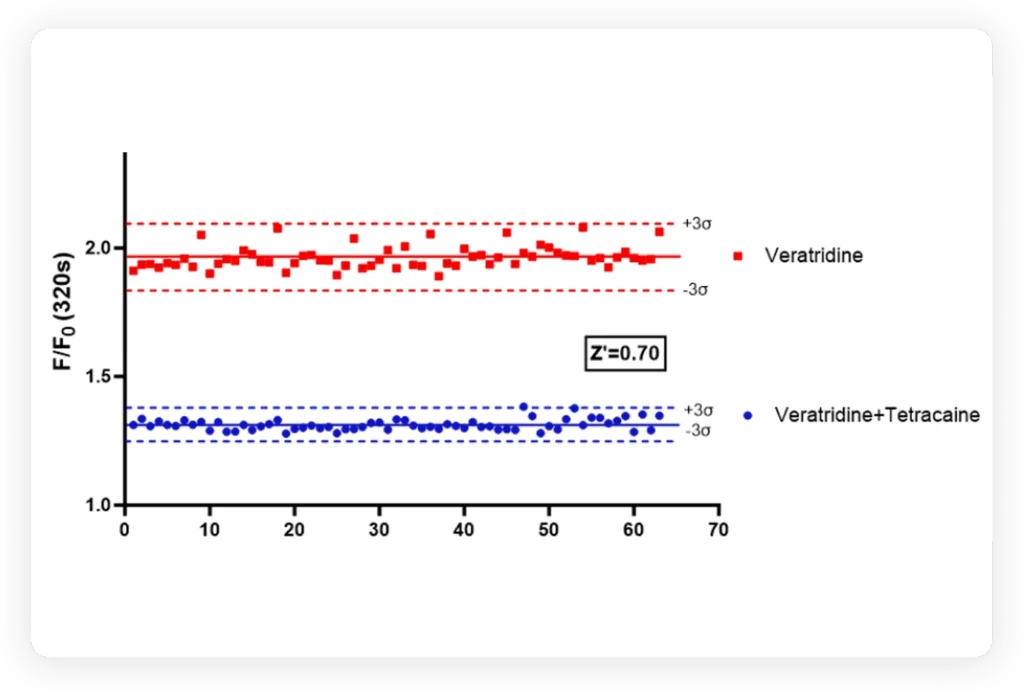
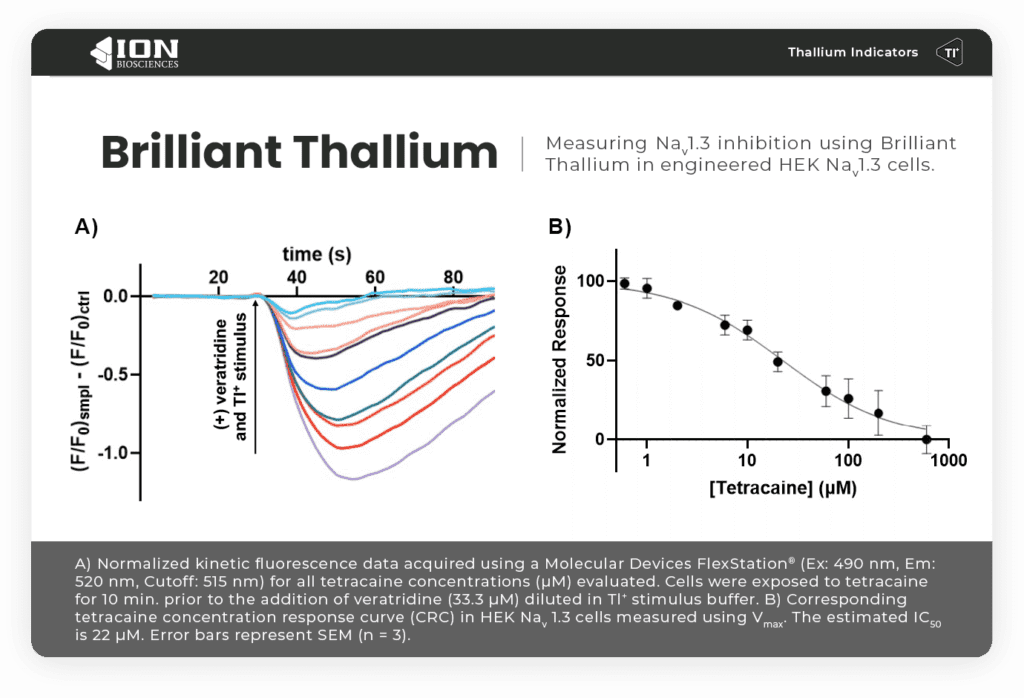
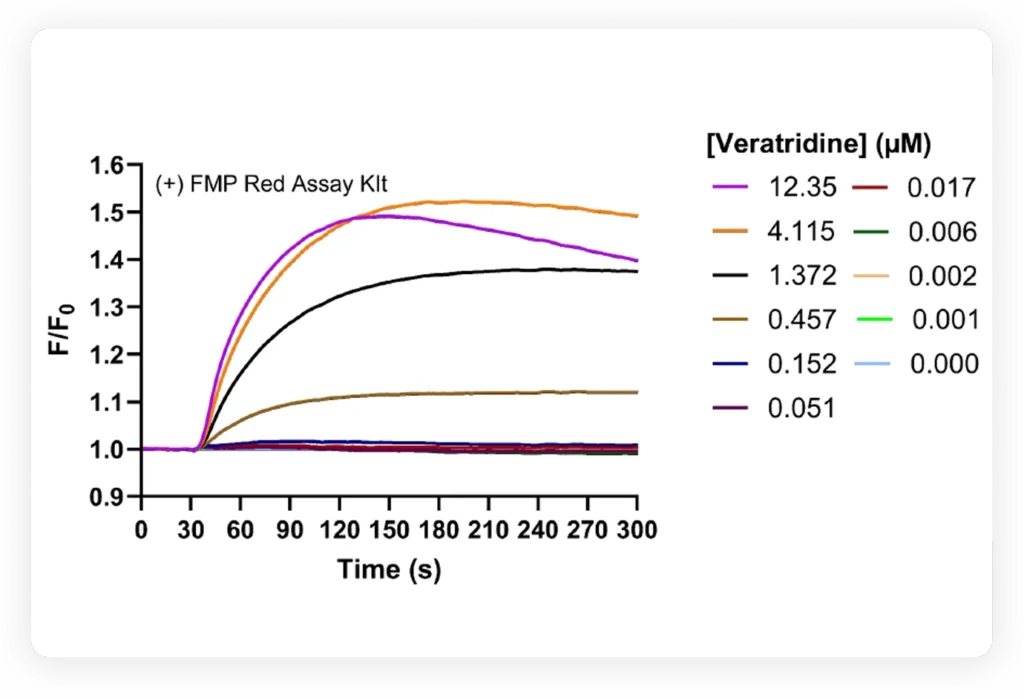
Potassium channels play major roles in cell excitability, making them pharmacological targets for treating epilepsies and cardiac dysfunction. A handful of potassium channels couple directly to GPCRs to regulate cell response to stimuli, broadening their utility as an important target class. The hERG potassium channel (Kv11.1), whose inhibition is associated with cardiotoxicity, is required for safety pharmacology screening. At ION, we have a ready-to-go, stable hERG cell line for cardiotox de-risking that has been validated using fluorescence-based and electrophysiology platforms as well as other potassium channel cell lines for drug discovery. We also manufacture the largest collection of potassium channel assays and fluorescent potassium indicators to help you achieve your potassium channel screening goals.
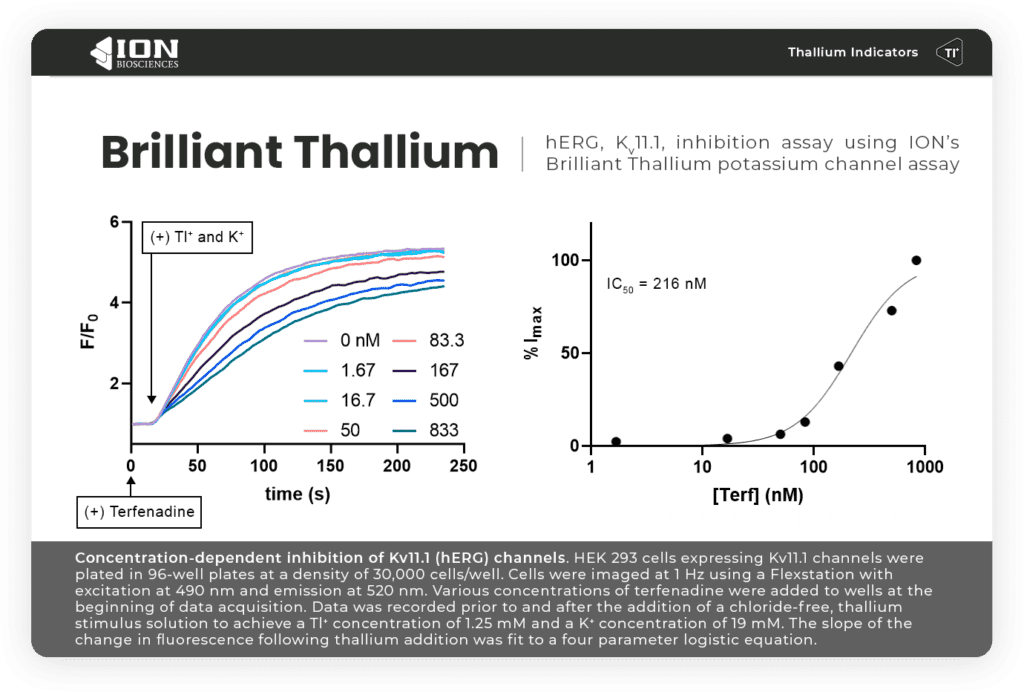
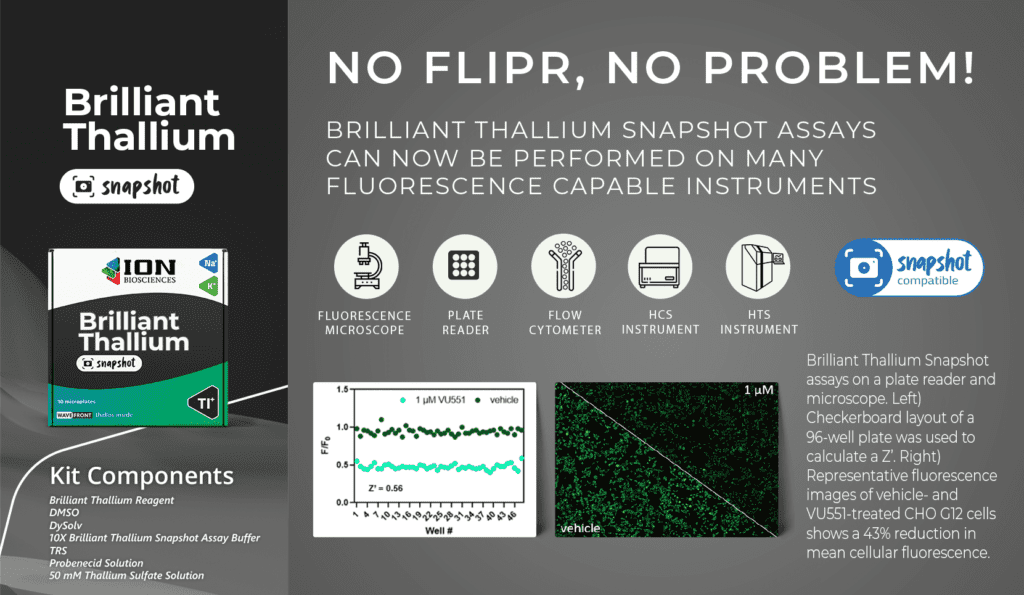
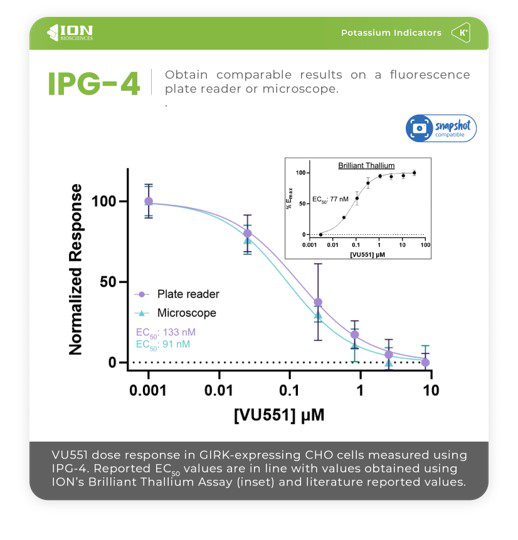
Calcium ions regulate numerous cellular processes and act as secondary messengers in a number of signaling pathways (i.e. GPCRs). The flow of calcium into and out of the cell is controlled by calcium channels. Some are activated by voltage, such as CaV1.x channels, and others are ligand-gated calcium channels, such as NMDAR and ATP-gated ion channels (P2XR). Changes in intracellular calcium concentrations can be detected using fluorescent calcium indicators such as Fluo-4 and Fura-2. We manufacture a large collection of calcium indicators and assays to run calcium mobilization assays.
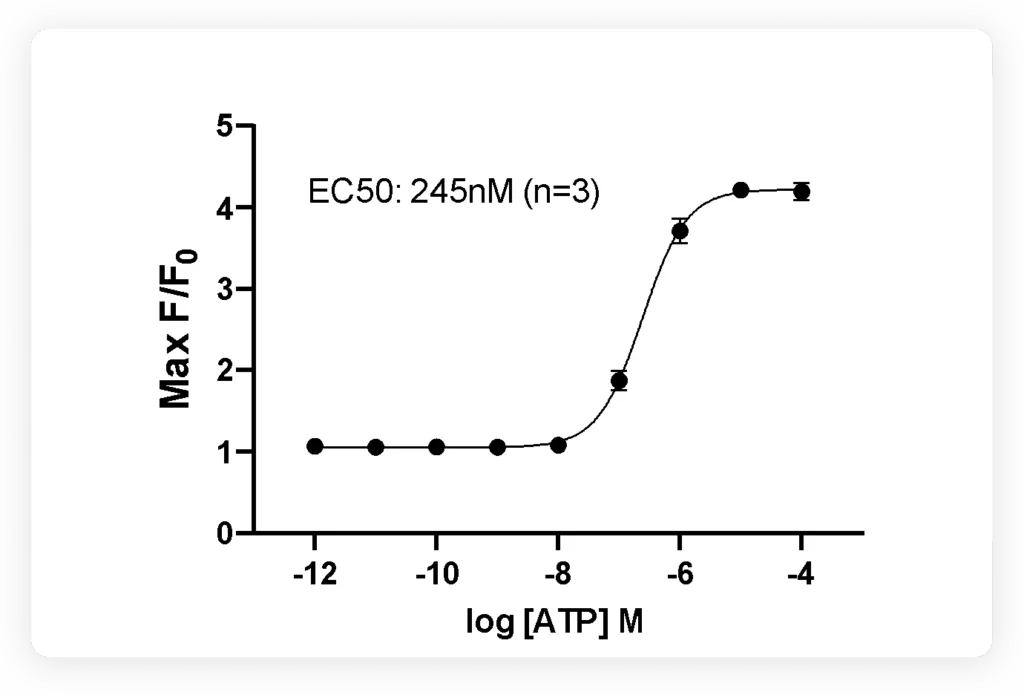
Non-selective cation channels, such as TRP channels, allow for the movement of monovalent and divalent cations with minimal discrimination between ions. TRP channels in particular are involved in sensing, and respond to environmental stimuli such as heat or cold, and play a key role in our ability to taste spicy or bitter flavors. Since these channels are typically non-selective, many of our fluorescent ion indicators and assays can be used to probe TRP channel activity.